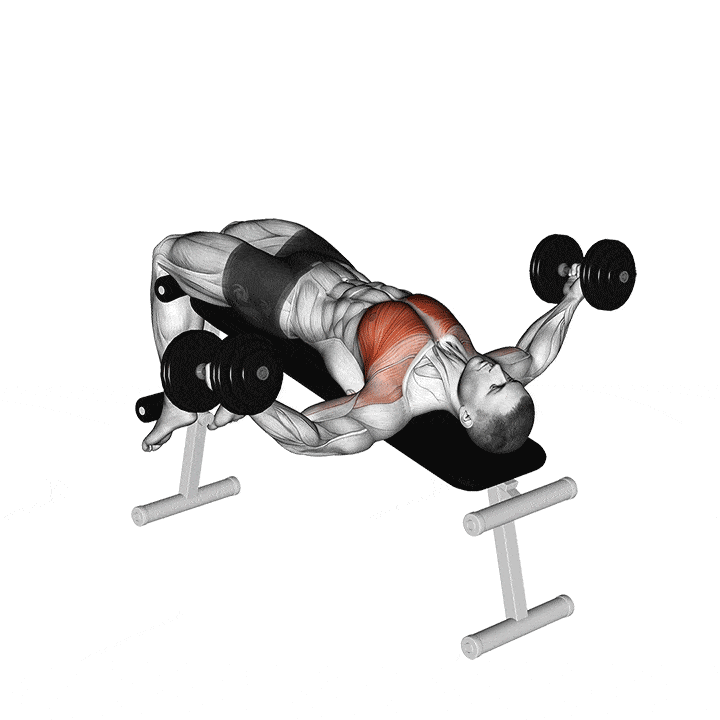2. Dumbbell decline fly
This exercise is a variation of the chest fly targeting the chest with the emphasis on the lower chest muscles. Even though different parts of a muscle can’t actually be targeted, making use of dumbbells allows stabilizer muscles to be worked and additional stress can be placed on the muscle fibers. So, this exercise can be very effective if done safely and proper form should always be practiced to avoid injury. Be safe and start with light weights and increase gradually as you become accustomed to the movement.
What muscles does the dumbbell decline fly work?
Primary muscles:
The pectoral muscles are targeted with dumbbell flys and the angle of this the dumbbell decline fly primarily targets the lower pectoralis muscles.
Secondary muscles:
The anterior shoulder muscles are used for supporting the pectorals in the movement. The scapular stabilizers stabilize the shoulders helping to anchor the shoulder joint during the movements.
Benefits of the dumbbell decline fly
1. The dumbbell decline fly helps improve muscle growth and strength
This exercise can be used for stimulating new muscle growth and building strength.
2. The dumbbell decline fly helps to isolate the pectoral muscles
All variations of dumbbell flys can be helpful for specifically targeting the chest muscles, and the dumbbell decline fly for targeting the lower chest muscles.
Instructions for the dumbbell decline fly
1. Hold 2 dumbbells on top of the thighs while sitting on the decline bench with the legs secured under the padded bars of the bench.
2. Lie back on the bench bringing the dumbbells level with the head.
3. Extend the arms sideways out from the body with the elbows slightly bent. This will be the starting position of the exercise movement.
4. Keeping the elbows bent, lift both dumbbells up in a semi-circular motion and bring them together while contracting the chest muscles without the dumbbells touching each other.
5. Bring both of the dumbbells back to the starting point until you feel the chest muscles starting to stretch.
6. Complete as many repetitions as desired.
This exercise can be done with 2 to 3 sets of 8 to 12 repetitions, meaning that the above steps need to be repeated for 8 to 12 times with 1 -2 minute break before repeating the set another 2 or 3 times.



